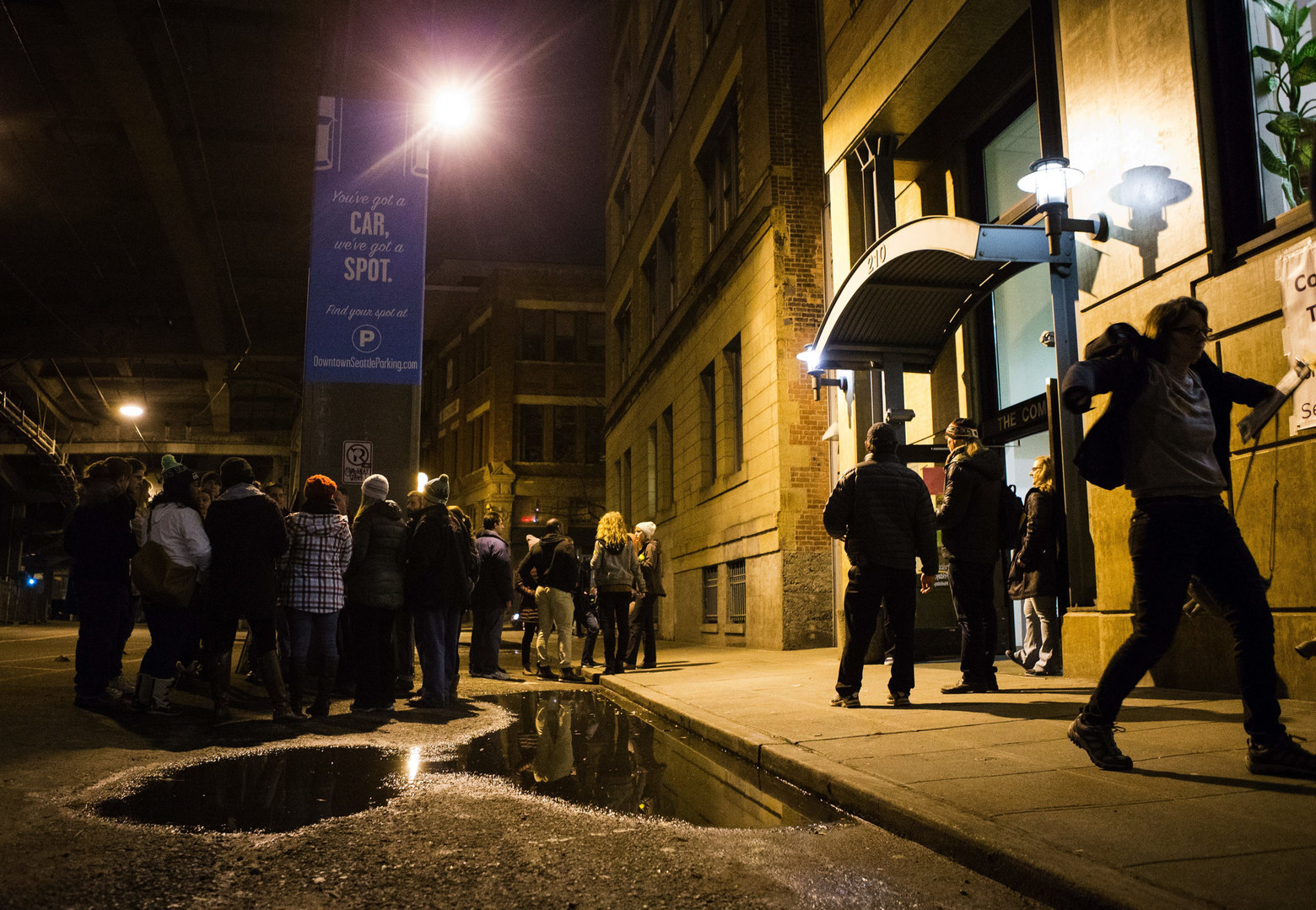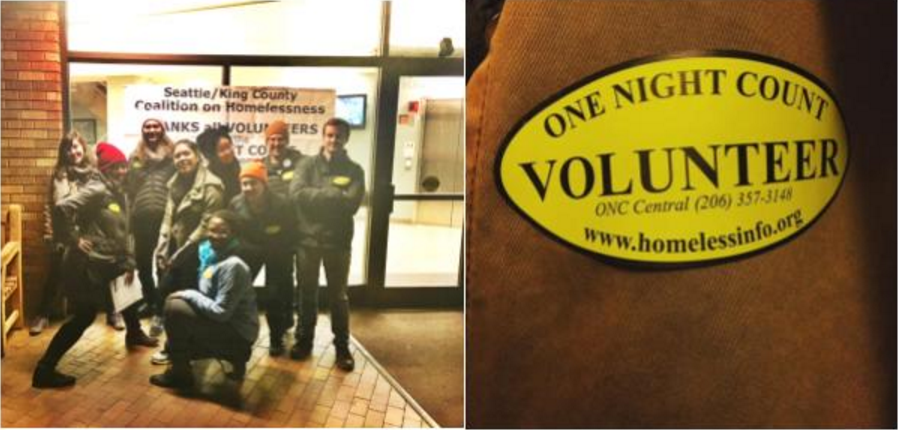Written by Tara Lee Lange, Master of Social Work student and YWCA Seattle | King | Snohomish GirlsFirst intern
After midnight on Jan. 29, I left my cozy bed to volunteer with the One Night Count. Every year in January, the Seattle/King County Coalition on Homelessness leads an effort to determine how many people, in one night, are experiencing homelessness outdoors, in transitional housing, and in shelters. The One Night Count is one of the largest community-organized counts in the United States; hundreds of volunteers convene and fan out across King County to count between the hours of 2 and 5 a.m. The end result of this event helps identify the prevalence of homelessness in our community and influences important education, community action, and advocacy efforts.
This was my first experience with the One Night Count. I’m a social work student who is passionate and dedicated to working on the behalf of marginalized groups. I am a cisgender, white female who is in graduate school for social work. I give this description of myself to call attention to the fact that, excluding my identity as a woman, I experience a great deal of privilege in my life. That privilege pervades each step I take, and on that night in January, I walked to count. I felt that this experience would expand my knowledge and experience on the issue of homelessness, as well as provide needed volunteer help.
After arriving, my fellow volunteers and I were divided into groups and given a map that outlined a walking section of King County. My group was assigned a portion of Seattle’s University District. As we prepped ourselves for our excursion we were given several pieces of advice: Do not approach or engage with anyone, be respectful, and be quiet. We are, essentially, walking through their bedrooms. Remember that.

As my group traversed the slopes and angles of the streets, we were quiet and solemn. Moving at a steady pace, we looked in doorways and behind hedges, beneath trees, and under bridges. I checked in with myself. How was I feeling? The truth is that I was anxious, and I felt fear. That anxiety and fear were not for me, though; they were for the people we counted.
Vulnerable to victimization
Several weeks before the count, I sat in Real Change’s downtown Seattle office. Real Change is a weekly street paper that provides immediate employment and advocates in a variety of ways for people experiencing homelessness. There to volunteer my time, I was listening to a staff member discuss the common issues that people experiencing homelessness often face. This young woman, passionate about her work, gave compelling arguments to the classic concerns about homelessness often cited by our more privileged Seattle residents, chief among them: the belief that homelessness brings issues of crime and safety to an area. In reality, however, who is more likely to experience crime or violence: the person who is able to lock and secure their home, or the person whose only shelter is a tent, a car, or a sleeping bag in a public area?
During January’s One Night Count, my group and I weaved through alleys and across parking lots. We did not need flashlights; the moon and city lights illuminated our way. The truth is, people who are experiencing homelessness are much more likely to be victimized in almost all facets of crime, including theft and violence. As I walked, I could not shake the memories of reading about Stacey Davis, the woman murdered under the Magnolia Bridge this past August. I could not shake the very recent and very fresh headlines of the five people shot (two killed) in the Seattle homeless camp known as The Jungle only several weeks ago. I could not, and still cannot, shake the facts and statistics I’ve learned in my curiosity after leaving the Real Change office, that the rate of violence against a national sample of people experiencing homelessness was almost 25 times that of the general U.S. population. Hate crimes against people experiencing homelessness committed by housed people increases every year, with 1,437 reported attacks within the last 15 years (which, due to the poor treatment of those experiencing homelessness in society, is likely to be much higher due to under-reporting).
As I walked, my discomfort lingered—I felt fear and anxiety for those who are unsheltered. I have never experienced homelessness, so I cannot understand the depths of feelings brought by these conditions, but my sense of empathy, along with my understanding of the issues faced by those experiencing homelessness, tell me that if I were there, unsheltered and without my cozy bed (to which I would shortly return), I would be fearful. I would hear footsteps approach and my heart might race. To be unsheltered is to be vulnerable.
What You Can Do
- We’re still waiting for Point In Time Count results from some communities across the state, but we know that 4,505 people were counted living without shelter in King County. It was a 19 percent increase over the previous year’s count. Visit the All Home website to learn more about the count results, read what King County is doing to address the housing and homelessness crisis, and find more ways to get involved.
- If you’re in King County, join an Advocacy 101 training presented by the Seattle/King County Coalition on Homelessness.
- If you live anywhere in Washington, urge your lawmakers to invest in the Housing Trust Fund, our state’s top tool for creating and maintaining affordable homes. Messaging your legislator takes just a couple of minutes using this form:
